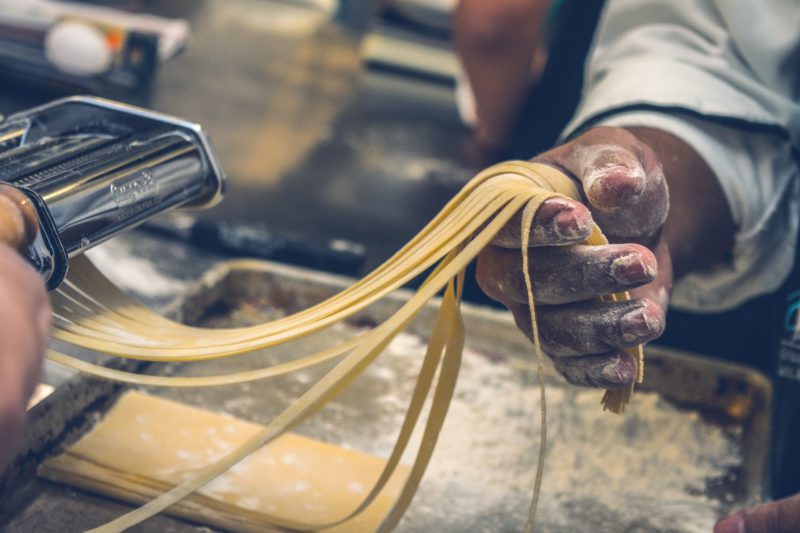Did you know that Italian pasta is an Asian invention? Or that every single pasta shape has a different purpose? How about the fact that spaghetti bolognese isn’t actually Italian? The sauce and pasta don’t mix well, you see.
There’s a whole world to discover when it comes to this starchy carbohydrate, and one that may surprise many an Italian too. Of course, no one consumes pasta quite like the Italians do, with individuals consuming around 25 kilograms of the foodstuff every year. If you’re planning a trip to this fabulous European destination or just want to experience the pasta phenomenon at home, you should dive deep into the many facets of this traditional ingredient. From the origins of the flour-and-water combo to learning to eat pasta as the Italians do, grab a fork, work up a big appetite and dive into our guide without further ado!
History of pasta
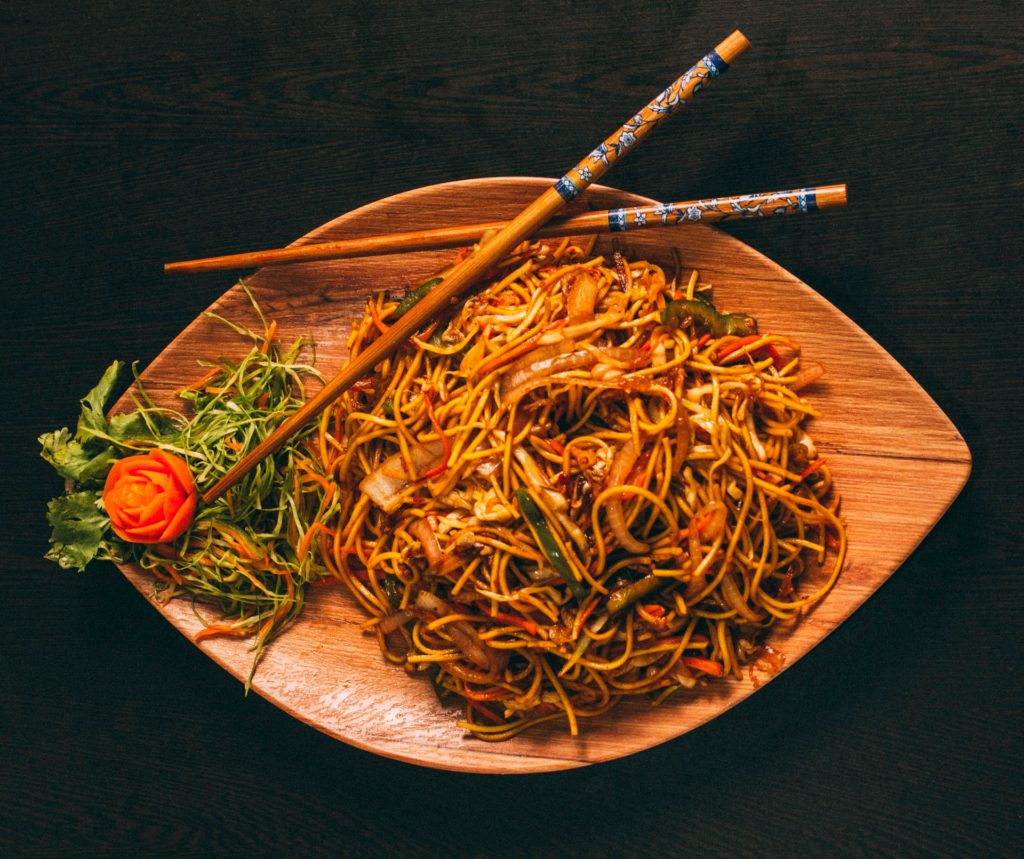
Many a proud Italian might tell you that pasta is an Italian invention, and it’s best not to argue! In truth, foodstuffs similar to pasta originated in Asia, several thousand years before they made it to Europe.
Legend has it that the explorer Marco Polo introduced pasta to Italy in the 15th century after discovering it on one of his many voyages. No one knows the truth for sure, but it’s one edible item that the Italians have taken to their hearts and made their own.
What makes Italian pasta?
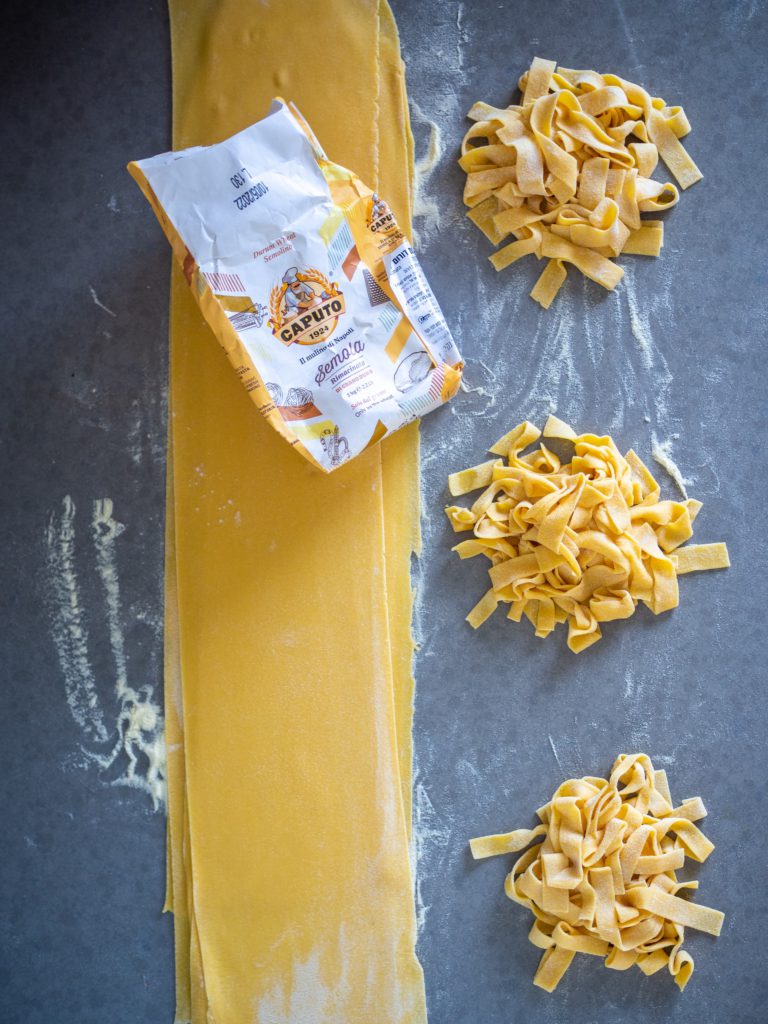
If we accept that pasta was around in Asia for a very long time before it found its way to Italy, it’s worth pointing out that the Italian version is subtly different from many of the noodle dishes you’ll find in Asia. You’ll find rice, yam, bean and wheat flour used in different Asian noodles, whereas the Italian variety is largely made from durum wheat ground into semolina. Sometimes, egg yolks are added to the dough.
Durum wheat flour — or semolina — has long been adopted for its versatility. It is high in gluten and low in moisture, resulting in a pasta dough that is more pliable and much easier to stretch into long pieces without breaking. It is this quality that makes durum wheat dough highly suited for crafting into different shapes and purposes with ease.
Why are there so many pasta shapes?
It might be hard for non-Italians to believe, but there are over 400 different pasta shapes. Each shape has a purpose and is best suited to a particular sauce and/or dish. Lasagna, for example, makes a ‘pasta pie’ possible thanks to the flat, wide, sheet-like shape of the pasta. Spaghetti, being long and thin, would be of no use in putting that particular dish together.
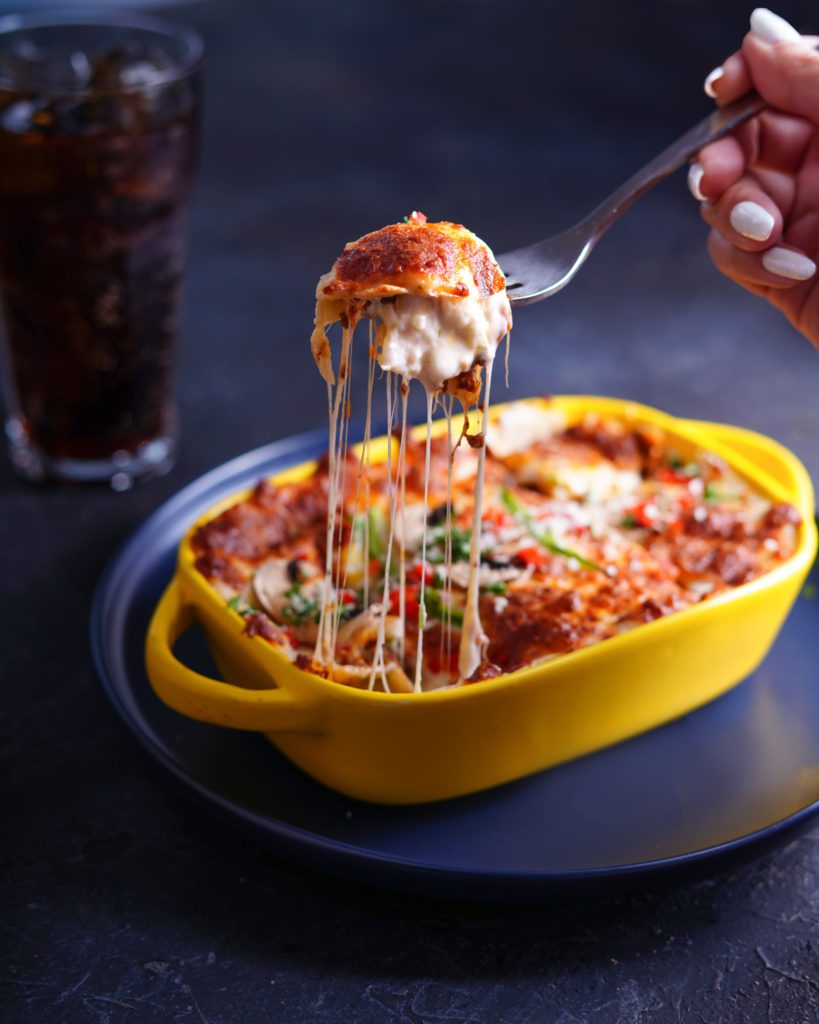
When eating pasta ‘the Italian way’ for the first time, there are a few subtle differences you might notice. Non-Italians have a tendency to overcook pasta while Italians prefer to eat theirs al dente, which is when there is still a bit of firmness to the pasta, so there’s plenty to chew on. Also, non-Italians tend to overdo the sauce. In Italy, the flavor of the pasta should always be present, with the sauce being there to cover rather than soak the main ingredient.
5 popular pasta shapes
Spaghetti
Perhaps the most famous Italian pasta type in the world is spaghetti. It’s in the shape of a cylinder, medium-thick and smooth. Eating it without getting sauce all over your clothes is near-impossible for the ill-practiced.
What to eat spaghetti with: Tomato sauces and meatballs
Tagliatelle
Tagliatelle is a long, flat pasta type that is often confused with fettuccine. Even Italians will have different views on the difference (if any!) but experts agree that tagliatelle should be at least a little bit thicker than fettuccine. Given its thickness, you’ll often find it made from fresh egg pasta which obviously adds to the flavor.
What to eat tagliatelle with: Thick sauces that are cream, tomato, or meat-based
Fusilli
Fusilli is a spiral-shaped pasta that is excellent at picking up lumpy sauces — small chunks of vegetables or meat easily get caught in the grooves making fusilli ideal if you want flavor with every mouthful. Given its shape, it cooks a lot quicker than many alternatives, so be mindful of this when you have a pan on the boil.
What to eat fusilli with: Meat or chunky vegetable sauces, or marinara (tomato-based sauce)
Farfalle
Pasta in the shape of butterflies (or bow ties!) is another popular favorite, and great for creamy sauces or very simple dishes. Its shape lends a real meatiness to the eating experience, but it’s not so large that you’ll be chewing all night. For some variety in your dishes, you can look for different sizes of farfalle — miniature-sized farfalle is often called farfalline while the larger variety is called farfallone.
What to eat farfalle with: Olive oil or creamy sauces
Penne
A pasta shape that rivals spaghetti in terms of popularity, penne is a short, fat, hollow cylinder with grooves around the outside, ideal for soaking up sauces. Thicker sauces and food chunks will also get trapped down the tubes themselves, making them a great choice if you’re looking to pick up as much flavor as possible.
What to eat penne with: Thick sauces
5 Italian pasta types to look out for
Orecchiette
Orecchiette means “little ears”, and these pasta shapes look just like their name. They’re shaped to catch sauces and do their job impeccably. You’ll often find orecchiette matched with the likes of cheese and pesto.
What to eat orecchiette with: Creamy sauces
Orzo
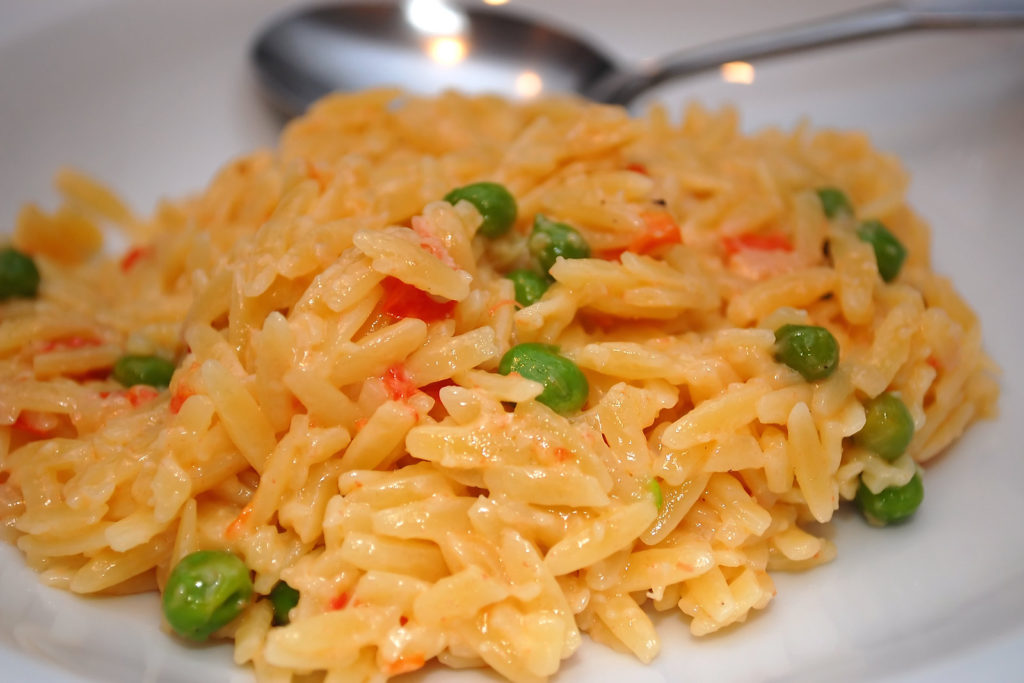
Orzo resembles large grains of rice. Its grain-like appearance actually ties into its name — orzo is Italian for “barley”. Quite unlike many of the other pasta varieties, this pasta is a contender for the smallest pasta shape of all. It is often used in soups as a thickener, or to add something starchy to the dish, though it is an extremely versatile pasta that can be used elsewhere, such as in salads.
What to eat orzo with: Soups and casseroles
Ombelico
Ombelico, or “belly button” pasta gets its name from its shape — it looks just like the average naval! It’s similar to tortelloni but the two are not interchangeable. Ombelico is filled with meat and cooked in soup, whereas tortelloni is traditionally filled with cheese and cooked in water. Similar again is tortellini — just like tortelloni but smaller and usually made with a vegetable filling.
What to eat Ombelico with: Soups or olive oil
Bugatini
Bugatini looks like a big spaghetti variant but it’s actually quite different! It’s hollow-centered. This means, much like penne, the pasta is a wonder at catching sauces! Bugatini is used in hearty dishes and no one comes away from such a pasta with room for another course.
What to eat bugatini with: Meaty and thick sauces
Capelli de chefs
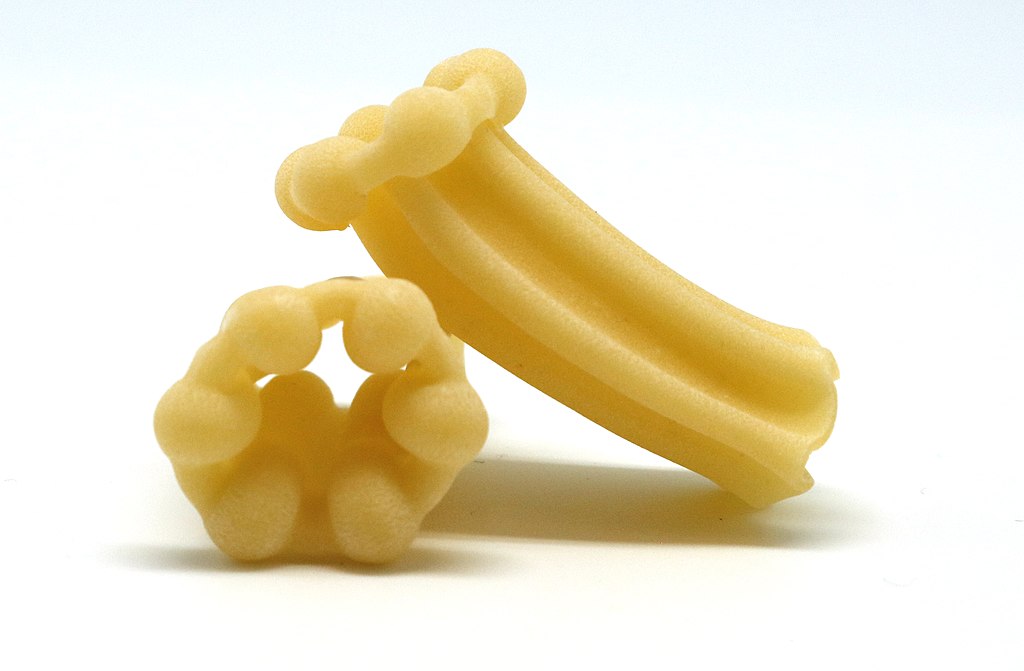
This “chefs hat” pasta may have started off as something of a novelty pasta, but they lend themselves well to all manner of dishes! They catch sauce thanks to their unique cylindrical shape, offer a meaty texture and substantial bite thanks to their size, and the ridges offer plenty to chew on.
What to eat capelli de chefs with: Tomato or vegetable sauces
How to eat pasta the Italian way
Decorum has a big part to play when it comes to eating foreign cuisine, and it’s worth trying to perfect your own pasta-eating style. Not only will it impress your Italian hosts if you travel, but you’ll also save yourself the mess and avoid stained clothes!
Most pasta types can be eaten with a fork alone, but you’re not alone if you’ve grown up twirling spaghetti on the face of a spoon. Italians don’t do this, however. They’ll use a spoon for mixing in sauces, but the likes of spaghetti is twirled using the plate as your base. Italians have also perfected the art of rolling a mouthful around a fork so no slurping is needed. Don’t be too shy to get some practice in!
We hope you’ve enjoyed our mini-voyage around this magical Italian ingredient! Why not introduce more styles of pasta into your own home cooking, or have a go at making your own from scratch? And if you’re planning to explore Italy, be sure to try as many different kinds of pasta dishes as possible. For now, buon appetito!
About TourHero
TourHero is a social travel platform that enables you to travel with like-minded people and fall in love with the journey. We work closely with handpicked local operators to ensure every experience curated is unique and exclusive to your travel group. Come with us on epic adventures and create memories that last a lifetime. Get started here!
